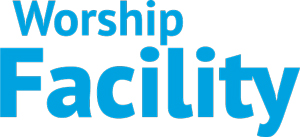Recently, I was working on a brand new professional lighting console, which will remain nameless, I had numerous issues from the start, and a few calls had to be made to customer support to get things resolved. While this was happening, in my mind I just really wanted to use the older lighting console, which led me to to wonder how many other technicians have on the spot issues and if they were taking care of their equipment.
Now I know that statement above was confusing. Why would I want to use an old console when there was a brand new professional one in front of me? Well, let me tell you: the manufacturer could not help me and only stated they were having issues with all the consoles in that series, and no real help was available at this point, other than another console could be overnighted to me, but with no guarantee it would not have the same problems. So I had to make the decision to grab an older lighting console that was available and use it.
Well that console worked fine, because I always maintained it and did the proper updates. I highly recommend regular maintenance and updates. Preventing lighting console failures and crashes involves a combination of proper maintenance and troubleshooting strategies. Here’s a a few recommendations to help you minimize the risk of issues:
Regular Maintenance
Maintaining a lighting console is crucial to ensure reliable operation, extend its lifespan, and prevent issues during performances or events.
- Software Updates
- Ensure your lighting console’s firmware and software are up to date. Manufacturers frequently release updates that fix bugs and improve stability.
- Backup Settings
- Regularly back up your console’s settings and configurations. This will help you quickly restore your setup in case of a crash.
- Clean Hardware
- Keep the console and peripherals clean and free of dust. Overheating due to dust buildup can lead to hardware malfunctions.
- Inspect Cables and Connections
- Regularly check all cables and connections for signs of wear or damage. Faulty cables can cause connectivity issues leading to crashes.
Best Practices
- Avoid Overloading
- Don’t push the console beyond its limits. Ensure that it has enough resources (CPU, memory) to handle the number of fixtures and effects you’re using.
- Use Compatible Fixtures and Protocols
- Ensure that all fixtures and peripherals are compatible with your lighting console. Using non-standard or incompatible devices can lead to communication issues and crashes.
- Monitor Power Supply
- Use a stable and reliable power source. Consider using an uninterruptible power supply (UPS) to protect against power surges or outages that could cause crashes.
- Educate Users
- Train all operators on proper usage and emergency procedures. Proper handling can prevent accidental settings changes that might lead to crashes.

Troubleshooting
Troubleshooting a lighting console involves identifying and resolving issues that affect its performance
- Check for Error Logs
- If the console crashes, review error logs or diagnostic information if available. This can provide clues about what went wrong.
- Reproduce the Issue
- Try to reproduce the crash in a controlled environment. Understanding the conditions that lead to the failure can help in diagnosing and fixing the problem.
- Test Hardware
- Test individual components (like control surfaces, DMX outputs) to identify any malfunctioning hardware. Swap out suspected faulty components to isolate the issue.
- Consult Documentation
- Refer to the console’s manual or manufacturer’s support resources for troubleshooting tips and error code explanations.
Additional Tips
- Implement Redundancy
- If possible, have a backup console or system available. This ensures that you can quickly switch to a backup in case of a failure.
- Network Management
- Ensure your network is configured correctly and that there are no conflicts or overloads. Improper network setup can lead to communication issues and crashes.
- Perform Stress Testing
- Periodically perform stress tests on your console and system to ensure they can handle peak loads without crashing.
- Contact Support
- If you encounter persistent issues, contact the manufacturer’s technical support for assistance. They can offer specialized advice and solutions.

By following these recommendations, you can significantly reduce the likelihood of lighting console failures and crashes, ensuring a more reliable and stable operation for your lighting setups. That way you can still get through the church service.

